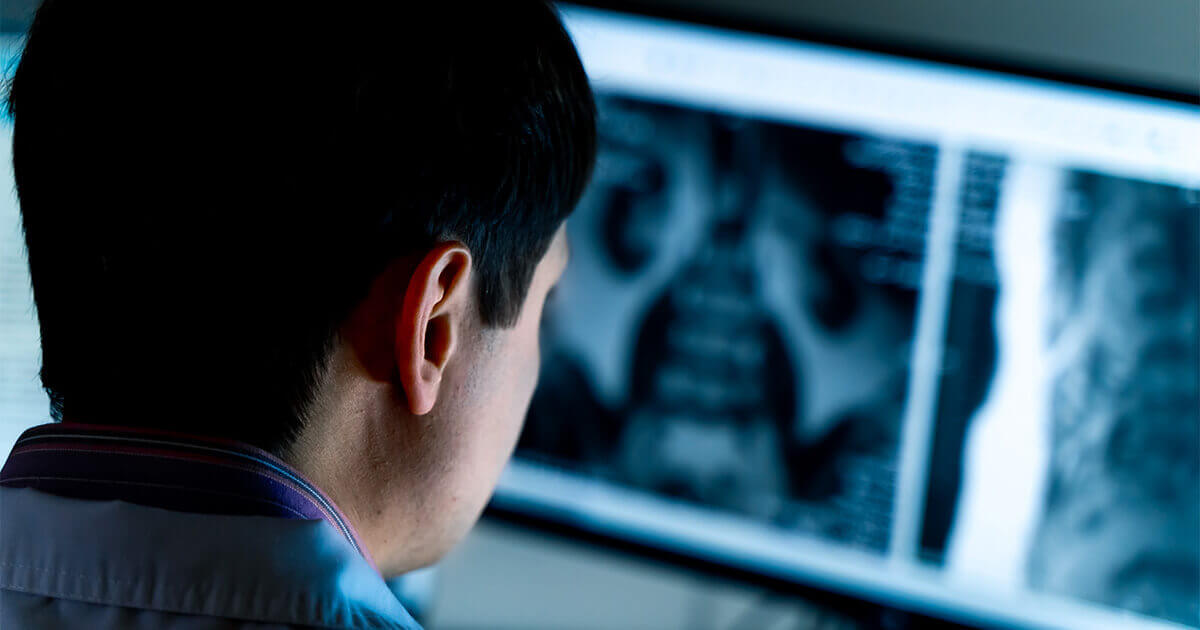
We collect basic website visitor information on this website and store it in cookies. We also utilize Google Analytics to track page view information to assist us in improving our website.

A study in the Journal of the American College of Radiology in 2018 showed that 60% of radiologists reported neck pain, while 50% reported lower back pain. A similar study published in the Journal of the American College of Radiology noted that a significant number of radiologists had to reduce their workload, modify their practice, or retire early due to these disorders.
Those are staggering numbers.
This is why ergonomics in the radiology industry is becoming an essential measure for the well-being of the workers.
Radiology quality assurance ensures that radiological examinations and interpretations are accurate, reliable, and safe. It includes following specific protocols and procedures to maintain high standards in radiology. Imaging data is acquired through the use of modalities such as X-rays, CT scans, MRI scans, and ultrasound to diagnose medical conditions and assist in developing treatment plans. It's important for radiologist’s interpretations to be accurate for proper diagnoses, treatment plans, and better patient outcomes.
Errors in radiology can have serious consequences, such as incorrect treatment plans and delays in patient care. That's why it's crucial to maintain quality assurance standards to minimize errors and ensure patient safety.
Ergonomics, the design of workspaces, equipment, and tasks for better performance and well-being, is gaining recognition as a critical factor in radiology. Radiologists spend long hours sitting in front of computers, which can cause problems like muscle and bone issues, tiredness, and reduced productivity.
Recognizing the impact of poor ergonomics, there's a growing emphasis on integrating ergonomic principles into radiology practices. Good ergonomics helps radiologists work comfortably and efficiently, reducing the risk of work-related injuries and improving overall performance.
In this blog post, we'll explore the importance of ergonomics in the radiology industry and the benefits of implementing these practices in the workplace.
Ergonomics is the study of making workspaces, equipment, and tasks better for people. It focuses on creating comfortable, efficient, and safe environments for workers in different jobs. Whether it's an office, a factory, or a healthcare setting, ergonomics is important for improving productivity, reducing injuries, and making people happier at work.
In radiology, ergonomics is especially important because of the specific work involved.
Radiologists spend a long time sitting, looking at medical images on computer screens, and using specialized software. If ergonomic considerations are not taken into account, they can experience physical strain, discomfort, and repetitive stress injuries.
Poor ergonomics can have a big impact on the well-being and performance of radiologists.
Physically, it can cause problems like back pain, neck pain, and carpal tunnel syndrome. These problems not only make them uncomfortable but also affect their ability to do their job well.
The consequences of poor ergonomics go beyond individual radiologists. It can make them less productive, cause more injuries at work, and potentially harm patient outcomes. It's important to provide a good ergonomic environment for radiologists to ensure their well-being and help them do their job better. This benefits both the professionals and the patients they take care of.
Ensuring high-quality radiology services is crucial for accurate diagnoses and patient safety.

Quality assurance plays a vital role in achieving these standards by minimizing errors and promoting optimal care. Radiology practices implement strict protocols, procedures, and quality control measures to maintain consistency and precision in diagnoses, resulting in appropriate treatments and better patient outcomes.
Ergonomics directly affects the quality assurance of radiology by influencing the well-being and performance of radiologists. When radiologists work in an ergonomic environment, they experience less physical strain, discomfort, and fatigue. This enhances their concentration, focus, and decision-making abilities, reducing the risk of mistakes. Ergonomics also minimizes the likelihood of musculoskeletal issues and mental fatigue, helping radiologists maintain accuracy in interpreting medical images.
Furthermore, ergonomics improves the efficiency of radiology workflows. Well-designed workstations, proper equipment placement, and streamlined processes boost productivity.
Radiologists can work comfortably and efficiently, reducing the time needed for each interpretation and report. This not only improves patient output but also allows radiologists to give thorough attention to each case, reducing the chances of missing important details.
There are several examples of how ergonomic improvements can enhance accuracy and efficiency in radiology:
Implementing ergonomic practices in any industry, including radiology, can face challenges and obstacles. It is important to address these issues to successfully integrate ergonomic principles in the workplace.

Common challenges in implementing ergonomic practices in radiology may include:
To overcome these challenges, the following strategies can be helpful:
By applying these strategies, the successful integration of ergonomic practices in radiology can be achieved, promoting a healthier and more productive work environment.
Implementing ergonomic practices in radiology brings multiple benefits, including improved accuracy and reliability of examinations, reduced physical strain and fatigue for radiologists, enhanced workflow efficiency, and better patient care and outcomes.
However, there are challenges such as limited awareness and resistance to change. To overcome these challenges, strategies like education and awareness, leadership support, employee involvement, gradual implementation, collaboration with experts, and regular evaluation can be employed.
Prioritizing ergonomics in the radiology industry creates a healthier work environment, improves radiologists' well-being and performance, and ultimately benefits both professionals and patients.